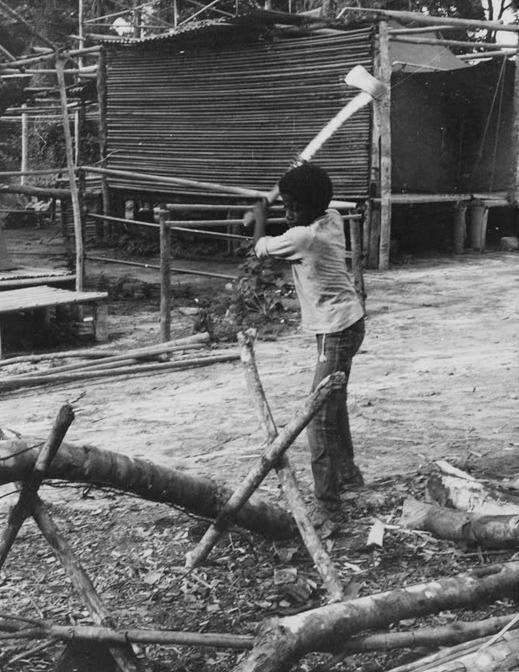
Figure 1.--Boys in rural areas have farm chores. Here we see a Liberian boy chopping wood (May 1968). Note how he is dressed much like an American boy might dress at the time. |

|
Liberia is a West Africa country which faces the Atlantic Ocean north of the Equator and borders Cote d'Ivoire, Guinea, and Sierra Leone. It is a lush, well watered tropical country with important rainforests. There are three main geographic regions: 1) a narrow, sandy strip of coastal lagoons and mangrove swamps, 2) inland rolling hills covered with tropical forest, and 3) plateaus that rise to low mountains in the northeast along the northern border with Guine. The history of Liberia is closely tied to the American abolitionist movement wehich began settling former slaves in Liberia (1822). The capital is name Monriovia after U.S. President James Monroe who was president when the settlinhg of former slaves began. The Afro-Americans declared a republic (1847). A social divide developed between the Afro-Americans and the native resodents in the interior. Samuel Doe carried out a military coup which led to authoritarian rule (1980). Charles Taylor led a rebellion (1989). He won an election (1997). His brutal rule and involvemebnt in the neigboring Sierra Leone civil war resulted in his removal (2003). Ellen Johnson Sirleaf ws elected (2005) and is attempting to rebuild a war-torn country. Liberia is richly endowed with water, mineral resources, forests, and a climate favorable to agriculture. Thge economy is based on the productionr and export of basic products, primarily raw timber and rubber. The ecnomy was badky damaged by the civil war. The new government is attempting to revive these sectors. The county is 95 percent African. There are many different tribes: Kpelle, Bassa, Gio, Kru, Grebo, Mano, Krahn, Gola, Gbandi, Loma, Kissi, Vai, Dei, Bella, Mandingo, and Mende. Afro-American are about 2.5 percent of the population. Congo people constitute most of the remaining 2.5 percent. They are the descendants of immigrants from the Caribbean.Aboout 20 percent of the population speaks English. There are about 20 tribal languages, most of which are not written languages. We do not yet have much information on Liberian boys activities. School is of course the most important. Religious beliefs include: Christianity (40 percent), traditional beliefs (40 percent), and Islam (20 percent). Evangelicals who appeared in the 1960s are growing in importance. As in most of Africa, the most popular activity amomg boys is soccer. Liberia made headlines with the trial and conviction of Charles Taylor for war crimes.
Navigate the Boys' Historical Clothing Web Site:
[Introduction]
[Activities]
[Biographies]
[Chronology]
[Cloth and textiles]
[Clothing styles]
[Countries]
[Topics]
[Bibliographies]
[Contributions]
[FAQs]
[Glossaries]
[Images]
[Links]
[Registration]
[Tools]
[Boys' Clothing Home]
Navigate the Boys' Historical Clothing national pages:
[Return to the Main African country page]
[Return to the Main African page]
[Algeria]
[Angola]
[Kenyan]
[]
[Madagascar]
[Mali]
[South Africa]
[Uganda]
